How to Choose Bed Sheets: A Buying Guide
Choosing the right sheets is just as important as a quality mattress, pillow, or comforter in achieving a comfortable bed. Our bed sheets are available in coordinated sets, or separately as individual fitted sheets, flat sheets, and pillowcases you can mix and match to create a cozy, colorful retreat. But there’s more to choosing sheets than picking patterns and a color palette: Fiber quality, fabric weave, thread count, and sheet size are important factors to consider for optimal comfort.
How to Choose the Best Fabric for Bed Sheets
Sheet fabrics vary in feel, warmth level, and appearance, so choosing the right option often boils down to your individual preferences. To decide which fabric is best for you, first consider how sheets are made. While the process differs depending on the type of material, yarn is typically woven on a loom to create large rolls of fabric which is later cut into individual sheets and pillowcases, and then hemmed and finished. Explore the top qualities of the most common sheet fibers and fabric types, and then choose sheets to suit your specific sleep preferences.
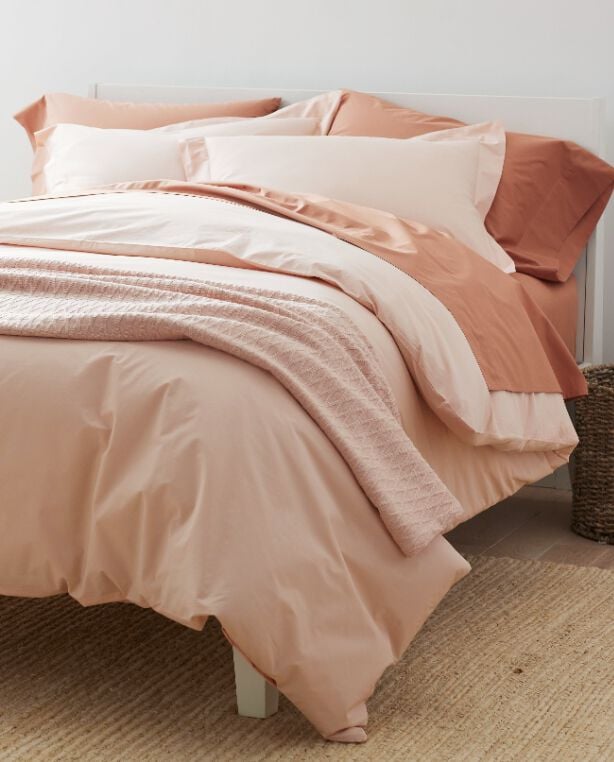
There are three main factors in producing quality sheeting fabrics: fiber, weave, and thread count.
- Fiber: Individual fibers are spun together to form yarn or thread. Most of our sheets are made of 100% cotton, including Egyptian and Supima® cotton, though we also offer options in natural linen, a bamboo blend, and TENCEL™ Lyocell.
- Weave: A fabric construction formed by interlacing two yarns at right angles. Some bed sheet fabrics are woven, including sateen and percale, while others are knit.
- Thread Count: Thread count is the number of threads per square inch. The higher the thread count, the tighter the weave and the warmer the sheets.
Choose Natural Fibers for the Most Comfortable Sheets
When choosing your sheets, consider the specific fibers used to manufacture the fabric. Cotton and other natural fibers are breathable and more comfortable than synthetic materials like polyester. For improved comfort, choose sheets made with the following natural fibers.
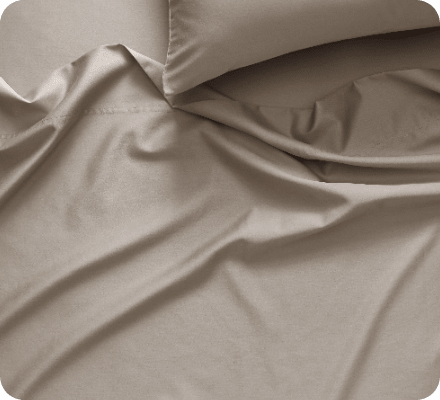
Supima® Cotton
Supima® Cotton is exclusively grown in the US and is strictly regulated by the Supima® Association of America. It is an exceptional, extra-long staple cotton that yields a softer, stronger high-quality fabric. We offer percale, sateen, and organic Supima® cotton sheets, so there are plenty of options to suit your preferences.
Benefits of Supima® Cotton Bed Sheets:
- Superior quality cotton
- Breathable
- Soft and durable
- Resists pilling and fading
- Best for year-round comfort

Egyptian Cotton
Egyptian Cotton is an extra-long staple cotton grown and handpicked in Egypt. Sheets made with Egyptian cotton are softer, finer, and last longer than sheets made with other types of cotton. Plus, this fabric gets softer and better with each washing.
Benefits of Egyptian Cotton Bed Sheets:
- Superior quality cotton
- Breathable
- Soft and durable
- Resists pilling and fading
- Best for year-round comfort
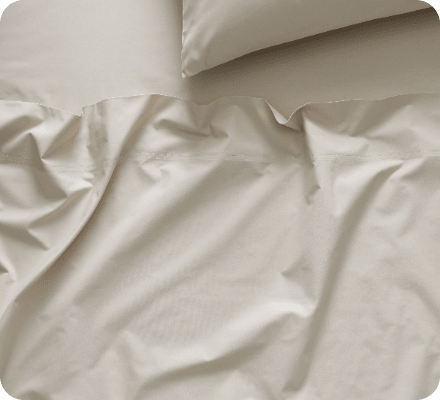
Organic Cotton
Organic Cotton is grown in an environment where no pesticides, chemical fertilizers, or herbicides have been used for a minimum of three years. It is used to produce a variety of fabrics, including percale, sateen, flannel, and jersey. The Company Store supports sustainable solutions: our GOTS-certified organic sheets are traced to ensure the cotton is sustainably sourced and processed responsibly.
Benefits of Organic Cotton Bed Sheets:
- Preferred by eco-conscious individuals
- Global Organic Textile Standard (GOTS) Certified
- STANDARD 100 by OEKO TEX®

Linen
Linen is a strong, natural fabric woven from the fibers of the flax plant, and it's a natural insulator. It will keep you cool in the summer months and retain body heat in the cooler months. Linen bed sheets are known for wrinkles—it’s the nature of the fabric, so embrace it!
Benefits of Linen Bed Sheets:
- Moisture-wicking and breathable
- Get softer with each wash
- Durable
- A top option for hot sleepers and warm temperatures
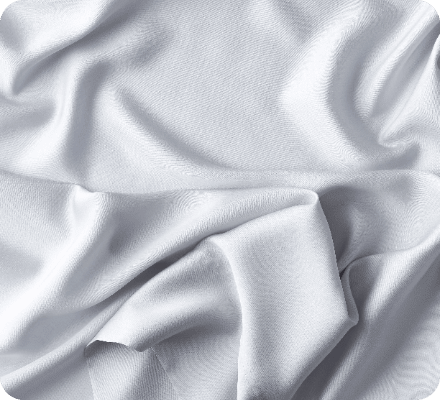
TENCEL™ Lyocell
TENCEL™ Lyocell is a durable and airy fabric with moisture-wicking and antimicrobial properties. It’s derived from sustainably sourced wood pulp. Soft and gentle to the touch, TENCEL™ Lyocell sheets help regulate body temperature keeping skin feeling cool and dry.
Benefits of TENCEL™ Lyocell Bed Sheets:
- Responsibly sourced and biodegradable
- Long-lasting softness and gentle on the skin
- Enhanced breathability
- Feel cool and dry
- Keep hot sleepers cool, even in warm temperatures
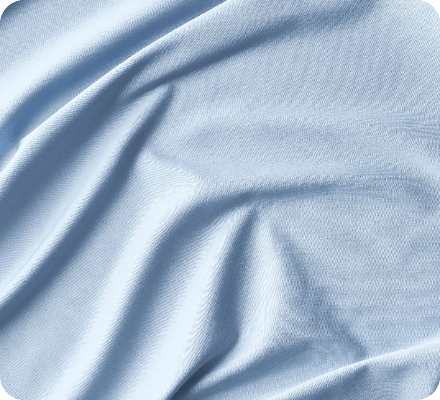
Rayon made from Bamboo
Rayon made from bamboo is a strong, smooth, soft fabric that is highly absorbent and quick drying. It keeps you cool in summer and warm in winter. Our bamboo-blend sheets are 70% rayon made from bamboo and 30% cotton.
Benefits of Rayon Made From Bamboo Sheets:
- Naturally hypoallergenic
- Breathable, moisture-wicking
- Soft and smooth to the touch
- Ultra-durable and long-lasting
Types of Weaves for Bed Sheets
After fiber, consider the benefits of different weaves to choose the perfect sheet fabric. Whether you sleep hot, cold, or somewhere in the middle, explore these options to create the most comfortable bed in any season.
Crisp & Cool
Lightweight percale sheets offer a smooth, matte finish and cool, crisp feel. Percale is made with a balanced weave, meaning it has the same number of threads across as down for a crisp but soft and durable product. This fabric offers the comfort of a freshly made hotel bed. If you kick off the sheets at night because you’re always hot, then our crisp and cool percale sheets may be a perfect option.
Benefits of Percale:
- Lightweight, cool, and breathable
- Smooth, crisp yet soft feel
- Gets softer after every wash and resists pilling
Cotton Percale Sheets Are Best For:
- Year-round comfort
- Hot sleepers
- Warm temperatures
Butter-Soft
Known for its luster and drape, sateen is one of America’s most popular sheet fabrics. A sateen weave has more threads across than down, which gives it a shine and produces a buttery-soft feel. Sateen wrinkles less than other sheet fabrics. If you tend to sleep cool, a heavier, warmer sateen weave makes a great choice.
Benefits of Sateen:
- Lustrous, smooth sheen for an elegant look
- Buttery-soft feel
- Long-lasting
Cotton Sateen Sheets Are Best For:
- Year-round comfort
- Cold sleepers
- Cold temperatures
Soft & Relaxed
Cotton jersey is a relaxed and breathable fabric. Unlike percale and sateen, cotton jersey sheets are knitted, not woven. This sheet fabric offers a bit of stretch and the soft, comfortable feel of your favorite T-shirt.
Benefits of Jersey:
- Comfortable, cozy softness
- Durable, sheds wrinkles, easy-care
- Breathable
Jersey Knit Cotton Sheets Are Best For:
- Year-round comfort
- Cold sleepers
- Cold temperatures
Warm & Toasty
Cotton flannel sheets are made with a thicker yarn, and the surface is gently brushed to give the fabric a bit of loft for a cozy feel. Flannel sheets are designated by weight rather than by thread count: Our 5 oz. flannel sheets weigh five ounces per square yard of fabric. We also carry a 6 oz. option, but either of our flannel sheet weights will keep you cozy and warm all night long.
Benefits of Flannel:
- Keeps you warm and comfortable
- Traps body heat and prevents the cold from getting in
- Soft and cozy
Cotton Flannel Sheets Are Best For:
- Fall and winter months
- Cold sleepers
- Cool temperatures
What Is a Good Thread Count for Sheets?
Thread count alone is not an indicator of quality. Our lower thread count sheets are just as soft and durable as our higher thread count options because of the premium quality of the yarns that we use—so choose based on sleep preferences rather than a high thread count.
What Size Bed Sheets Do I Need?
Your bed sheets should be the same size as your mattress. Measure your mattress length, width, and depth (or thickness) to get the best fit. If your fitted sheet is too small, it may pop off the bed at night; too large, and your sheets slip while you sleep.
Most of our fitted sheets are a generous 14 inches deep, compared to the industry standard of 7 to 12 inches. When it comes to extra deep pocket fitted sheets, you’ll find options from 16 to 20 inches. If you use a mattress pad or topper or prefer an extra-thick mattress, choose deep-pocket sheets for better coverage.
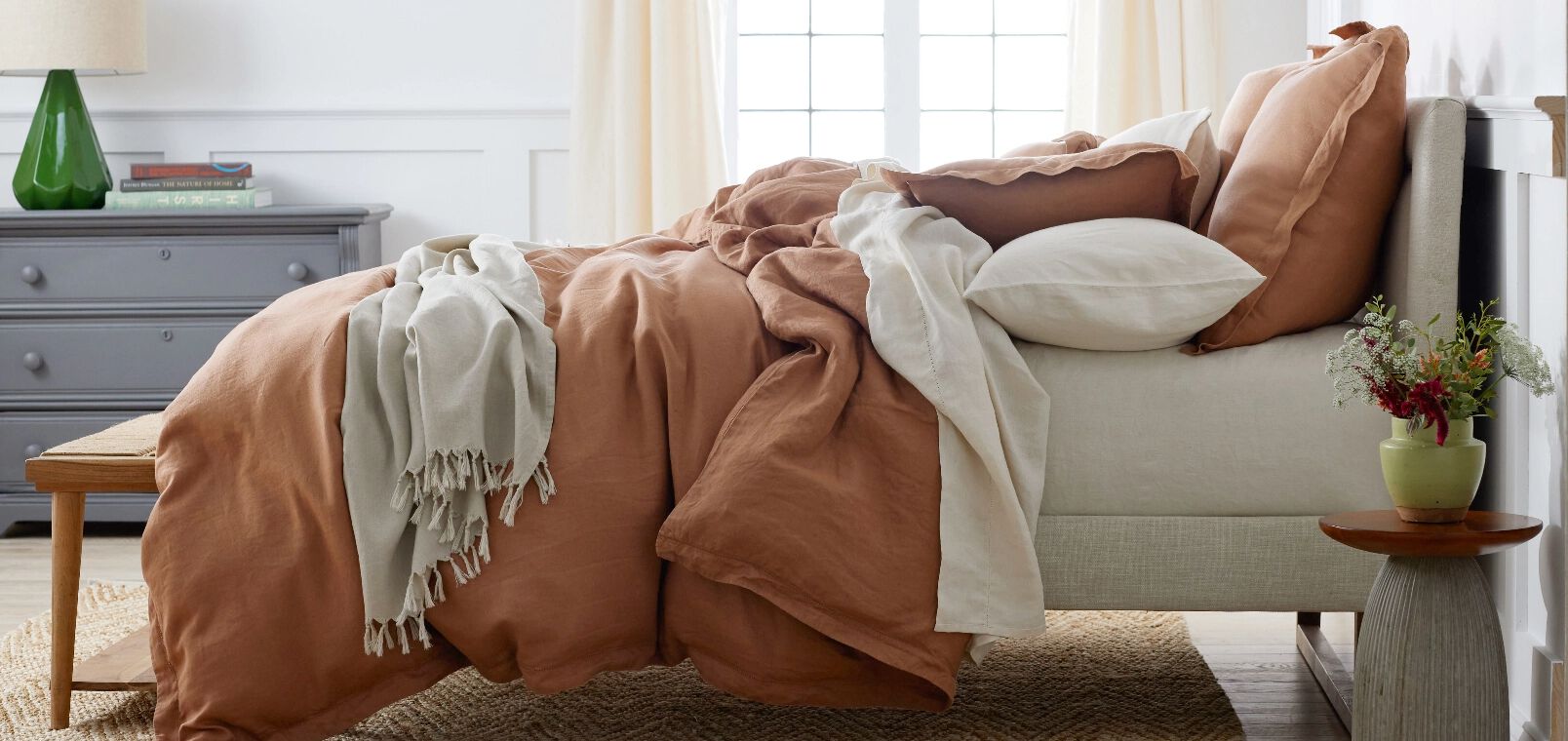
The Company Store Sheet Size Guide
This sheet size guide is a starting point; mattress and sheet dimensions vary by brand so compare the measurements of both for best results. If your mattress doesn’t match any of these measurements, our customer service team can help you choose the right sheet size.
| Flat | Fitted | Deep Pocket Flat | Deep Pocket Fitted | |
|---|---|---|---|---|
| Twin | 66 in. x 96 in. | 39 in. x 75 in. | N/A | N/A |
| Twin XL | N/A | 39 in. x 80 in. | N/A | N/A |
| Full | 81 in. x 96 in. | 54 in. x 75 in. | N/A | N/A |
| Queen | 90 in. x 102 in. | 60 in. x 80 in. | 90 in. x 108 in. | 60 in. x 80 in. |
| King | 108 in. x 102 in. | 78 in. x 80 in. | 114 in. x 108 in. | 78 in. x 80 in. |
| Cal. King | N/A | 72 in. x 84 in. | 108 in. x 112 in. | 72 in. x 84 in. |
Pillowcases are available separately and in sets with matching sheets, and complete the look of your bed. Measure your pillows to determine which size pillowcases or shams will fit properly:
- Standard pillowcases are usually 20 by 30 inches, while shams are 20 by 26 inches.
- King-sized pillowcases measure 20 by 40 inches, compared to 20 by 36 inches for a King sham.
- Euro pillow shams come in one size, a 26 by 26 inch square.
Choosing quality bed sheets comes down to fabric, weave, and size. Once you’ve determined what you need in these important variables, explore options for colored or patterned sheets to create a bedding look that suits your tastes. Explore our other Guides for more design tips and tricks.